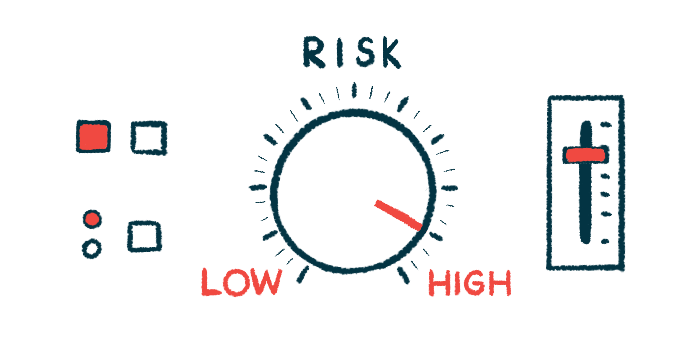Many high-risk COPD patients in US not getting recommended care
Study urges better ID, treatment of those at risk of flares

In the U.S., many people with diagnosed or probable chronic obstructive pulmonary disease (COPD) at higher risk of disease exacerbations are not receiving recommended care, a new study found.
“This analysis reveals the gaps and opportunities for improvement in the identification and management of patients with COPD in the US,” the researchers wrote.
“Evidence suggests that influential factors contributing to these gaps include missed and late diagnosis, inadequate disease assessment to determine [patients’] current and future risk, and delayed implementation of appropriate pharmacological interventions,” the scientists wrote, adding that these data “point towards the importance of promoting adherence to evidence-based guidelines” and better recognition of high-risk patients.
Moreover, the team called for “critically needed” improvements in the U.S. in patient medical records, citing a need for more consistent and accurate coding, and new software tools. Such advances would help to “better understand broad national trends and inform public health agendas and initiatives,” they wrote.
The study, “Patterns of care in the management of high-risk COPD in the US (2011–2019): an observational study for the CONQUEST quality improvement program,” was published in The Lancet Regional Health – Americas. The work was funded in part by Optimum Patient Care Global and AstraZeneca, which has developed several approved COPD therapies and is advancing new candidates.
U.S. initiatives aiming to improve care for COPD patients
Over the past two decades, several initiatives have been launched in the U.S. with the aim of improving the detection and care of people with COPD — estimated to affect 16 million Americans and among the leading causes of death in the country.
This study was part of CONQUEST, in full the COllaboratioN on QUality improvement initiative for achieving Excellence in STandards of COPD care. The initiative specifically aims to improve care for patients who are at higher risk of exacerbations, or times when COPD symptoms suddenly worsen, and other health problems.
Using a healthcare database maintained by the nonprofit organization DARTNet, researchers analyzed trends in care for people with diagnosed or probable COPD between 2011 and 2019.
In each year, the scientists identified three groups of patients: those newly diagnosed with COPD; patients who had been living with a COPD diagnosis for more than one year; and those not diagnosed with COPD, but whose medical records indicated possible COPD. The final group involved those who had recently experienced events resembling COPD exacerbations and had a history of smoking.
Those considered high-risk patients had at least two moderate or one severe exacerbation, or probable exacerbations, in the two prior years, with one occurring in the past year.
Between those endpoint, there were 16,012 newly diagnosed high-risk patients, 54,580 previously diagnosed high-risk patients, and 40,202 with probable high-risk COPD. Across the three groups, about 60% of patients were women and the average age was in the mid-60s.
Among people with potential undiagnosed COPD, 23% were Black individuals. By comparison, less than 10% of patients with diagnosed COPD were Black patients. The proportion of white patients was lower among those with potential undiagnosed COPD (71.2%) compared with those with a COPD diagnosis (77.1%-78%).
“This suggests race is a factor in diagnosing patients, which aligns with previous studies reporting the ongoing racial disparities in respiratory outcomes and the importance of considering the social and economic context when addressing patient barriers to care,” the researchers wrote.
Analysis finds major gaps in COPD care for patients
In the year 2019, 167,197 patients were identified, with nearly 1 in 10 — 16,610 individuals or 9.9% — meeting the high-risk criteria.
In that year, nearly half of newly diagnosed high-risk patients (42.7%) had no record of having COPD symptoms reviewed by a medical professional in the year before or the year after the diagnosis was made.
More than 80% of patients with newly diagnosed or already diagnosed COPD had no record of a recent spirometry test. That standardized assessment for measuring lung function is generally recommended as part of the diagnostic workup for COPD.
“Diagnosis without spirometry may contribute to overdiagnosis and ill-fitted treatment,” the researchers wrote.
More than half of high-risk patients with a COPD diagnosis had no record of being prescribed inhaled therapies to treat the disease.
“Despite effective medication options being available, a surprising proportion of newly diagnosed and already diagnosed … patients at high risk had no evidence of receiving a prescription for an inhaled maintenance therapy,” the scientists wrote. They called for further research to assess reasons for this finding, such as barriers to accessing treatments or lack of access to affordable health insurance.
Also, more than 90% of diagnosed patients had no record of a recent assessment to check heart health or simultaneous health conditions potentially associated with use of oral corticosteroids.
“Cardiovascular disease is one of the most common causes of death among patients diagnosed with COPD … yet recorded evidence of cardiac risk assessment was less than 10% for all [patient groups],” the researchers wrote, adding that this finding “highlights opportunities for improvement.”
Findings suggest inconsistent adherence to evidence-based guidelines, and opportunities to improve identification, documentation of services, assessment, therapeutic intervention, and follow-up of patients with COPD.
“Adopting strategies to incorporate regular risk and disease assessment into routine primary care management of patients with COPD and patients who are current or former smokers is … a priority,” the team wrote.
Among potential undiagnosed patients, more than 90% also had no record of spirometry or assessment of corticosteroid-related health conditions.
Moreover, in all groups, records of spirometry and assessments of COPD status, risk of heart-related complications, and corticosteroid-related adverse events were not generally improved over the years.
“Findings suggest inconsistent adherence to evidence-based guidelines, and opportunities to improve identification, documentation of services, assessment, therapeutic intervention, and follow-up of patients with COPD,” the researchers wrote.
“This study also highlights opportunities to improve recording in EMR [electronic medical records] and includes a call to action for EMR software companies to develop tools that allow providers to easily adopt and employ coding strategies, and a call for providers to use these strategies consistently,” they added.








